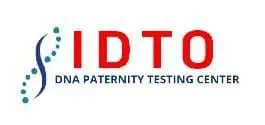
Does a child inherit more DNA from their mom or dad?
This question has been asked by many people over the years. Most people have been taught that they inherit 23 chromosomes from their father and 23 chromosomes from their mom.
In fact, this is an easier way to explain how genes are passed on from parents to offspring. According to some scientists, 50/50 may not exactly be the case. In each cell, there is an organelle called Mitochondria. Mitochondria are also called the “powerhouse” of the cell because it produces the energy for the cell. Mothers pass on Mitochondrial DNA (mtDNA) to both sons and daughters.
In addition to the chromosomes that are passed in from each parent. MtDNA that is found in each cell can is passed on from the mother. Based on this research, many scientists consider more genetic information is passed on from the mother than the father.
Can offspring inherit Mitochondrial DNA from the father?
In years past the answer to this question would have been no. According to research cited from, The Scientist. There are unique instances where a child will receive MTDNA from both the mother and father.
What was not expressed was which parent contributed more mitochondria or how it affected the energy in the cell. But, it is possible for a father to genetically pass on mtDNA.
What does a father pass on to his son?
Dads pass on the Y Chromosome to their sons untouched.
If a child or mother wanted to determine the paternity of son and the alleged father was unavailable to perform a paternity test. Performing a Y Chromosome test with the paternal grandfather or uncle/sibling of the alleged father assuming they both share the same biological father is an excellent option.
What does the father pass on to his daughter?
If a child is female, this means the female child received one X chromosome from the mom and one X chromosome from their dad.
How are genes passed from parents to children?
In order for genes to be passed from one generation to the next generation, sexual intercourse must occur. Moms must form an egg and sperm is produced by the male. During the act of intercourse if the sperm is successful in fertilizing the egg. The process of conception begins. As half of the baby’s chromosomes will be contributed by the mother and half by their dad.
It should be noted, that which genes will be expressed in the child to our knowledge cannot successfully determine how the process works. What is known is that a process known as epi-genetics may play a significant role in how genes are expressed in a child.
Conclusion:
In closing, what we now know is that genetic inheritance is not as simple as 50/50. A child receives genetic information from both parents but some of the most recent scientific research suggests the mother’s genetic contribution may be more.
